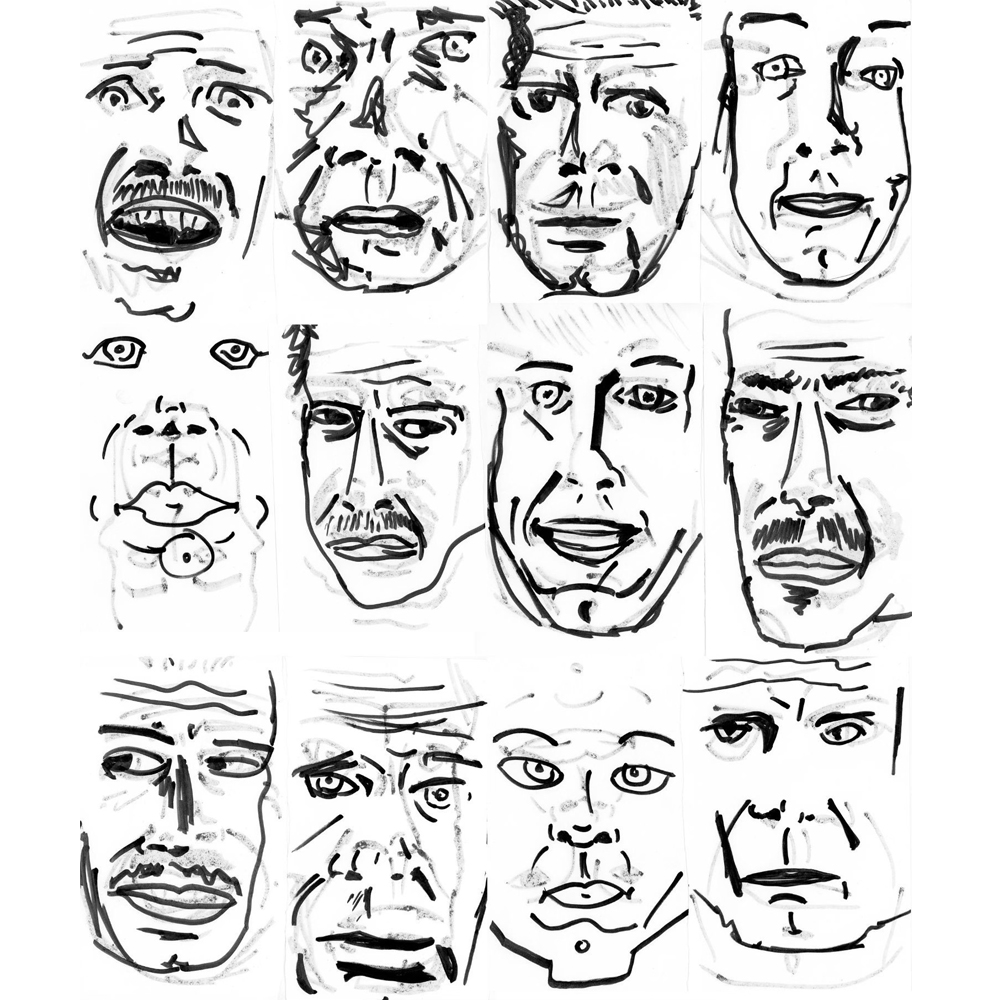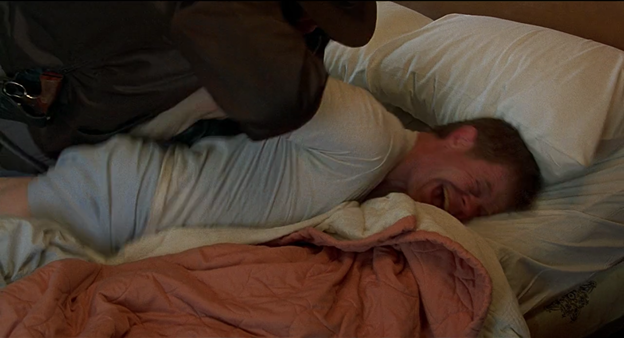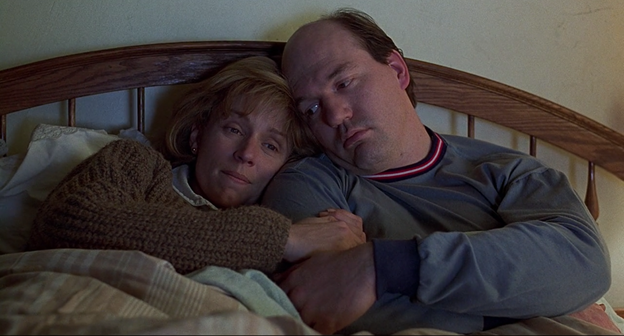Fargo: Mementos of the Midwest
 Among the many things memorable about Fargo, I find that I most connect to its locations. There is one shot specifically, when Steve Buscemi’s character, Carl Showalter, is driving into the airport parking lot, that I point to every time I watch the film. The camera briefly flashes to an exit sign, one that I would see every time I drove home from school. While Showalter takes the exit, my dad would take my brother and I, and eventually my brother would take me, and eventually I would take myself further up the highway, across the Mississippi river, into Highland, Saint Paul.
Among the many things memorable about Fargo, I find that I most connect to its locations. There is one shot specifically, when Steve Buscemi’s character, Carl Showalter, is driving into the airport parking lot, that I point to every time I watch the film. The camera briefly flashes to an exit sign, one that I would see every time I drove home from school. While Showalter takes the exit, my dad would take my brother and I, and eventually my brother would take me, and eventually I would take myself further up the highway, across the Mississippi river, into Highland, Saint Paul.
 Those seconds of screentime contain histories to many a Minnesotan, which exemplifies a kind of moment that permeates the film. Many of these moments, rather than evoking a forgotten history, summon emotions which have sunk to the bottom of my mind. The wooden doors and door frames in nearly every interior scene, for some reason, left me scraping for a way out of the film. The pale empty walls, save for a painting of a loon or two, quickly whip up the feeling of sitting on the carpet during a family reunion with the sober murmurs of what cousins in Vermont are up to in the background, maybe bothering my brother if I had the insight to take such a meaningful action.
Those seconds of screentime contain histories to many a Minnesotan, which exemplifies a kind of moment that permeates the film. Many of these moments, rather than evoking a forgotten history, summon emotions which have sunk to the bottom of my mind. The wooden doors and door frames in nearly every interior scene, for some reason, left me scraping for a way out of the film. The pale empty walls, save for a painting of a loon or two, quickly whip up the feeling of sitting on the carpet during a family reunion with the sober murmurs of what cousins in Vermont are up to in the background, maybe bothering my brother if I had the insight to take such a meaningful action.
This hollowness, a state that the Coen brothers repeatedly explore in their films, characterizes Fargo. When I first came to Florida State, the loudness and sharpness of the people was a beautiful contrast to take in. When a Floridian might boom their subwoofers at a stop light, a Minnesotan might turn down the volume. This quietness, when reflected in Fargo, doesn’t accentuate its theatricality, but rather builds its character. Father and car salesman Jerry Lundegaard, played by a flat-faced William H. Macy, is one of the most stark characters in the film. Despicable in nearly every way, Lundegaard is too midwestern to pillage for such fruits. While watching the film I almost wished he was a little bit worse of a person, just so the plot would leap out of its awkward standstill. Cowardly action upon cowardly action ends with him squirming in his underwear, getting arrested in a motel room. This exorcism-like moment is the type of black comedy that the Coen brothers work towards. Sick bastards.
 This sort of characterization is something that the Coens do their chins up, taking every chance to favor subversive, dry humor. Even the camera work, credited to legendary director of photography Roger Deakins, reeks of restrained sobriety. There is not a moment of soft focus throughout the film, and the color grading achieves its own beautiful bleakness. After all guilty parties have been either rounded up or killed, the film ends with a scene of pregnant detective Marge Gunderson, played by the endlessly beautiful and talented Frances McDormand, and her husband lying in bed. Her husband shares news of getting his artwork on a three-cent stamp, a minor victory championed by Marge. “That’s terrific.” They say, “I love you,” embrace, and Marge says, “only two more months.” The film ends.
This sort of characterization is something that the Coens do their chins up, taking every chance to favor subversive, dry humor. Even the camera work, credited to legendary director of photography Roger Deakins, reeks of restrained sobriety. There is not a moment of soft focus throughout the film, and the color grading achieves its own beautiful bleakness. After all guilty parties have been either rounded up or killed, the film ends with a scene of pregnant detective Marge Gunderson, played by the endlessly beautiful and talented Frances McDormand, and her husband lying in bed. Her husband shares news of getting his artwork on a three-cent stamp, a minor victory championed by Marge. “That’s terrific.” They say, “I love you,” embrace, and Marge says, “only two more months.” The film ends.
 This polarity, going from seemingly sparse and hopeless to warm and forward looking, is such a curveball I can’t help reacting to. Am I left agape? Or grinning ear to ear? It’s a sort of victory which doesn’t fit the film but makes it all the better. These Minnesotans can feel beyond small-minded impulses for money or sex; they can grasp the fruits of life no matter the temperature outside or the curve of their “o”s. Is Pascal right?
This polarity, going from seemingly sparse and hopeless to warm and forward looking, is such a curveball I can’t help reacting to. Am I left agape? Or grinning ear to ear? It’s a sort of victory which doesn’t fit the film but makes it all the better. These Minnesotans can feel beyond small-minded impulses for money or sex; they can grasp the fruits of life no matter the temperature outside or the curve of their “o”s. Is Pascal right?
The ASLC will be playing Fargo on 12/4 at 7:30pm and 10pm.
Written by & Art by: Rory Donohue


